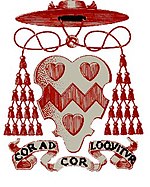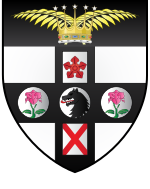Oxford Combined Court Centre
Buildings and structures in OxfordCourt buildings in EnglandCrown Court buildingsGovernment buildings completed in 1932Use British English from February 2023

The Oxford Combined Court Centre is a Crown Court venue, which deals with criminal cases, as well as a County Court venue, which deals with civil cases, in St Aldate's, Oxford, England.
Excerpt from the Wikipedia article Oxford Combined Court Centre (License: CC BY-SA 3.0, Authors, Images).Oxford Combined Court Centre
St Aldate's, Oxford City Centre
Geographical coordinates (GPS) Address Nearby Places Show on map
Geographical coordinates (GPS)
| Latitude | Longitude |
|---|---|
| N 51.7481 ° | E -1.257 ° |
Address
Oxford Combined Court Centre
St Aldate's
OX1 1TL Oxford, City Centre
England, United Kingdom
Open on Google Maps











